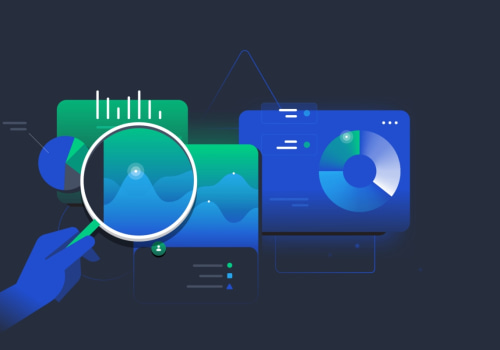Speed optimization is an important and often overlooked element of technical SEO. For many businesses, it can be the difference between success and failure. It's not just about making your website faster; it's also about improving the user experience and creating an optimal online experience for your visitors. With this technical SEO guide, you'll learn how to use speed optimization techniques to ensure your website is performing at its best.
You'll discover the best practices for optimizing your website for faster loading times, and how to audit your website for speed optimization opportunities. Plus, you'll also learn how to use tools such as Google PageSpeed Insights and Lighthouse to identify and fix potential speed optimization issues. So, if you're ready to take your website's performance to the next level, read on for a comprehensive guide to speed optimization in SEO.
Speed optimization
is a key factor for website success and user experience. Technical SEO techniques can help improve website loading speed, user engagement and overall performance.In this guide, we will look at some of the most effective ways to optimize website speed, the benefits you can expect, potential risks and tips for ongoing maintenance.
1.Image Optimization
- Images are an important part of any website, but they can also be a major drain on loading time. Optimizing images is one of the simplest ways to improve loading speed. You should compress images to reduce their file size without compromising quality. This can be done manually or with specialized software.You can also use image formats that are optimized for web use such as JPEG and PNG.
2.Minify CSS and JavaScript
- CSS and JavaScript files can also be a major source of slow loading speeds. Minifying these files involves removing all unnecessary characters (whitespace, comments, etc.) from the code without affecting its functionality. This reduces the file size and therefore the amount of time it takes for the page to load.3.Reduce Redirects
- Redirects are used when a page URL changes, but they can also slow down loading times if used too frequently. To reduce redirects, you should use canonical URLs and update any internal links that point to the old URL.4.Leverage Browser Caching
- Leveraging browser caching allows the browser to remember certain elements of the website so that it does not have to download them each time the page is loaded.This can significantly reduce loading times for repeat visitors.
5.Enable Compression
- Enabling compression on your website can reduce page load times by up to 70%. Compression works by compressing text files like HTML, CSS and JavaScript before they are sent to the browser, which reduces the amount of data that needs to be downloaded.Benefits of Website Speed Optimization
- Website speed optimization can have a range of benefits, including increased user engagement, improved rankings in search engine results pages (SERPs) and better conversions. Faster loading times can lead to improved user experience which can result in more returning customers and higher conversion rates.Potential Risks of Website Speed Optimization - While speed optimization is generally beneficial, there are some potential risks that need to be considered. Unexpected downtime can be caused by changes made to your website’s code or server settings, which could lead to lost customers or reduced revenue. It’s also important to make sure that changes do not negatively affect user experience.
Tips and Best Practices
- Here are some tips for optimizing website speed:- Measure website speed regularly using tools like Google PageSpeed Insights or WebPageTest.
- Optimize images, minify CSS/JavaScript, reduce redirects and enable compression.
- Leverage browser caching where possible.
- Monitor server performance and response times.
- Update your content management system regularly.
By using the right technical SEO techniques you can improve loading speed and benefit from increased user engagement, better rankings in SERPs and increased conversions. However, it’s important to be aware of the potential risks such as unexpected downtime or customer dissatisfaction. The best way to ensure your website is optimized for speed is to monitor performance regularly and follow best practices such as image optimization, minifying CSS/JavaScript files, reducing redirects and leveraging browser caching.
Website Speed Optimization Techniques
When it comes to website speed optimization, there are many technical SEO strategies that can help improve your website's performance. From caching to compressing images, there are many techniques that can help reduce loading times and improve user experience.Caching:Caching is a process of storing data in a temporary storage location, which helps reduce the time it takes for a website to access that data. By caching your webpages, you can reduce the amount of work the browser needs to do when loading each page and improve your website's speed.
Minifying code:
Minifying code is the process of removing unnecessary characters from the code, such as white space, comments, and formatting. This helps reduce the size of the code and makes it easier for the browser to interpret.Minifying code can significantly reduce loading times and help improve your website's performance.
Compressing images:
Compressing images is another way to reduce loading times and improve website performance. By compressing images, you can reduce their file sizes without sacrificing quality, which helps reduce the amount of data that needs to be transferred when loading the page.Optimizing web hosting:
Optimizing your web hosting is one of the most important steps in improving your website's speed.You want to make sure your hosting provider is reliable, has adequate resources, and offers features like caching and content delivery networks (CDNs) to help improve your website's loading times.
Analyzing Website Speed Performance
Analyzing website speed performance is essential for understanding the current state of your website's loading speed and user engagement. There are a variety of tools available to measure website performance, including Google PageSpeed Insights, Pingdom Tools, GTMetrix, and WebPageTest.org. Google PageSpeed Insights is a free tool that allows you to measure the performance of your website on both desktop and mobile devices. It provides metrics such as page load time and time to first byte, as well as suggestions for improving website performance.Pingdom Tools is another free tool that provides detailed performance reports and data visualizations that can help you identify areas where your website needs improvement. It also includes the option to set up regular checks and alerts so you can track your website's performance over time. GTMetrix is a third-party tool that provides detailed analysis of your website's performance, including page size, load time, and requests made by your website. It also offers a variety of recommendations for improving website speed and performance. Finally, WebPageTest.org is a free tool that provides detailed insights into how your website is performing from different locations around the world. It can help you identify potential bottlenecks in your website's loading speed and suggest improvements for better user experience. By using these tools to measure and track your website's performance, you can find areas where you need to optimize and make the necessary changes to improve your website's loading speed and user engagement.
Maintaining Website Speed Optimization
Speed optimization is a continuous process and requires regular maintenance to ensure it’s working at its peak performance.Here are some tips and best practices to maintain website speed optimization: Minimize HTTP requests: Minimizing HTTP requests is one of the most effective ways to improve website speed. Minimizing the number of HTTP requests can help reduce page load time and improve page performance. To reduce the number of requests, you can combine multiple CSS files into one and use image sprites to load multiple images at once.
Optimize Images:
Images can be a major bottleneck when it comes to website speed. Large images can significantly slow down your website, so it’s important to optimize them for web use.Image optimization involves compressing images, resizing them, and using the correct file format. You can also leverage lazy loading so that images are only loaded when they’re in view.
Optimize JavaScript and CSS:
Unminified JavaScript and CSS code can also slow down your website, so it’s important to minify them. Minifying JavaScript and CSS reduces their file size, making them load faster. You can also use caching to store frequently used files, so they don’t have to be loaded every time someone visits your website.Use Content Delivery Networks (CDNs):
A Content Delivery Network (CDN) is a network of servers located around the world that are used to deliver content to users more quickly.By using a CDN, you can offload the delivery of your content to these servers, which can significantly improve page load times.
Monitor Website Performance Regularly:
Regularly monitoring your website performance is key to maintaining speed optimization over time. You can use tools such as Google PageSpeed Insights or Pingdom to measure your website’s speed and identify potential areas for improvement. This will help you keep your website performing optimally over time. Website speed optimization is a critical factor for website success and user experience. Implementing the techniques discussed in this article can help improve loading speed, user engagement, and overall performance.By investing time and resources into speed optimization, businesses can gain an edge on their competition and create a better user experience. Ultimately, speed optimization can help businesses achieve higher rankings in search engine results and improved conversions.






